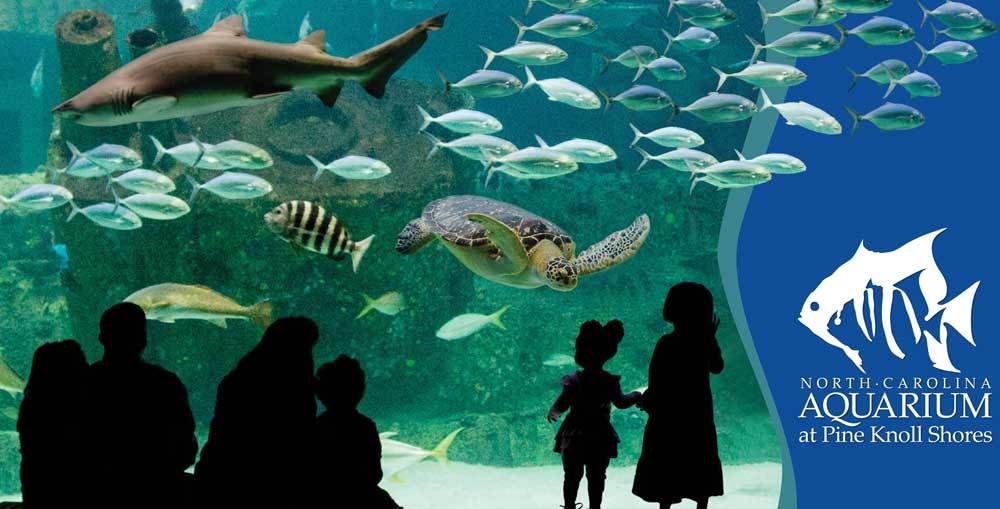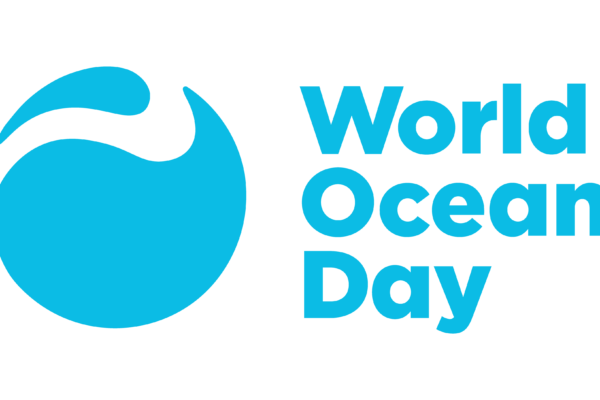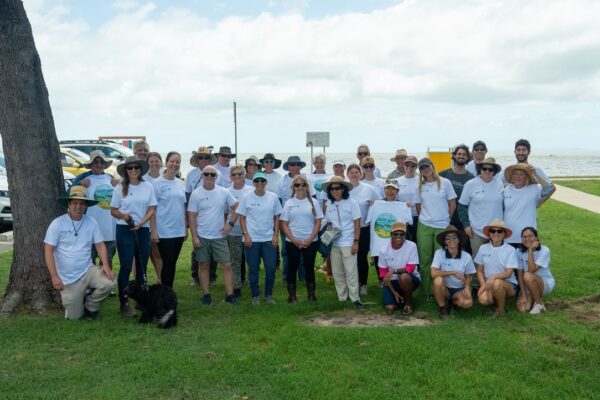This guest post by Windy Arey-Kent of NC Aquarium at Pine Knoll Shores is the final in a 3-part series on NC Aquariums’ Innovative Solutions Grants+ project, aimed at testing different approaches to engaging guests for conservation action at aquariums. This blog post is a look at what NC Aquariums learned as a result of this project. Thank you to Windy and everyone who helped at NC Aquariums for your hard work!
The North Carolina Aquariums were awarded a $16,000 Innovative Solutions Grant to see if our visitors would be interested in joining us in the purchase of Renewable Energy Certificate’s (REC’s) to help address the problems of climate change and ocean acidification. We were awarded the grant in December, 2013 and the project was funded through December, 2014. With this support, we were able to implement programs at each of our four sites and take four very different approaches to engaging visitors in this conservation ask during our high visitation months of May-September.
My experience working with The Ocean Project was extremely positive from the beginning. Working with the staff, in advance, to research and identify the best ways to approach a project of this scope, with 4 facilities, was extremely useful. I even had issues submitting the grant online, due to my inexperience with some technology formats, and staff at The Ocean Project worked with me directly to answer my questions so that I could successfully complete the application. This process was so beneficial, not only for me, but for my staff and our facility. The lessons learned through this project were significant and pertinent to our departmental goals, plus we had a lot of fun!
Why we tried
For our aquariums, our interest in doing this stemmed from our mission, which is to inspire appreciation and conservation of NC’s aquatic ecosystems, and also because it fit very nicely with a new strategic initiative at the NC Aquarium at Pine Knoll Shores, where our education department was focusing very intently on visitor’s conservation actions. And on the specific issue of climate change, we were really interested in an opportunity to move our visitors beyond “changing a light bulb" to a more meaningful action around energy choice, and this led us to RECs. According to the EPA, “One of the simplest and most effective ways to reduce your carbon footprint is to purchase REC’s, (which) are critical, effective and valuable instruments for expanding renewable energy in the U.S.”
For our visitors, our working assumption, based on research by The Ocean Project and others, was that they'd welcome information about how to be part of the solution, and "go green." So with this effort, here was an opportunity for us to do just that by supporting green power by buying a REC for the amount of energy typically used by a home in one month, while also helping our Aquariums achieve our own green energy goals though a "watt-for-watt" match from our partner, Greenlight Energy. (A secondary goal of the project was for each site to acquire enough REC’s to allow us to each become EPA Green Power Partners by obtaining at least 25% of our energy from renewables.)
We wanted to see what would work best, not only in terms of inspiring our visitors to take action, but also in terms of ensuring a positive staff and visitor experience. To do this, we tried different approaches at each site, yet kept a lot of the variables the same, most notably the ‘ask’ of purchasing a REC.
What we learned
The lessons learned were meaningful and pertinent: we were able to ascertain that our visitors expect and appreciate it when we suggest ways for them to help, and seem most inspired to act on behalf of conservation when we model those behaviors as a staff and facility, and relate the importance of those behaviors back to our animals and our mission.
The most straightforward measure was the amount of RECs purchased, and the table below shows our total kWh of green energy purchased, therefore avoiding the equivalent of that energy from traditional sources. While we did not reach our goal of becoming a Green Power Partner with the EPA, we learned a lot about how to go about obtaining that goal for our facilities in the future.
| NC Aquarium facilities | kWh Purchased | kWh Matched by Greenlight Energy | Total kWh |
| Fort Fisher | 76,798 | 76,798 | 153,596 |
| Pine Knoll Shores | 21,870 | 21,870 | 43,740 |
| Roanoke Island | 14,731 | 14,731 | 29,461 |
| Jennette's Pier | 80,601 | 80,601 | 161,202 |
| 194,000 | 194,000 | 387,999* |
But the more interesting insights came to us when looking at the above together with the results of the visitor surveys we conducted during the three-month trial period.
We found that at all sites, visitors were indeed welcoming of suggestions of how to help solve ocean problems, and very interested in the topic of energy choice.
The sites surveyed more than 1,100 visitors, with three key findings:
- 92% agreed (slightly agree to strongly agree) that “learning ways people like me can help conserve the ocean and its animals makes this aquarium a better place to visit”
- 92% agreed (slightly agree to strongly agree) that “this aquarium is a good source of information for people like me to learn ways to help conserve the ocean and its animals”
- 83% were interested (somewhat to very interested) in learning about "options for conserving energy or energy choices available to me at my home”
As for the staff’s response to the project, feedback from staff suggested that visitors were unfamiliar and easily confused by the REC concept, leading the Aquariums to conclude that alternate clean energy /energy saving asks should be explored. By comparing and contrasting their experiences, the Aquariums also learned some valuable lessons:
When making an active appeal – staff or volunteers asking visitors to consider action through the purchase of RECs – the efforts were much more effective when interpreters used auditorium programs and dive shows to connect the ask with the animals and appeal to widely shared values, such as a belief in American ingenuity and a concern for the future. In contrast, interpreters were far less effective when they tried to intercept visitors outside of these programs and provide more detailed information about clean energy and RECs.
"Our visitors expect and appreciate it when we suggest ways for them to help, and seem most inspired to act when we model those behaviors as a staff and facility, and relate the importance of those behaviors back to our animals and our mission."
When making a passive appeal – relying on exhibits or displays that did not include staff interpretation – the key appeared to be demonstrating the Aquarium's own commitment to taking action on the issue, as the presence of working wind turbines was cited as the reason why support was so strong at Jennette's Pier. In comparison, similar messaging about the aquarium's interest in the issue had much less impact when combined with a nonfunctioning windmill display. This finding was more of a surprise, as although visitors spent very little time at the exhibits and did not have the benefit of an interpreter's explanation, those who saw the actual wind turbines at Jennette's Pier seemed to know immediately and support the Aquarium's commitment to clean energy.
Visitors were inclined to take action then and there, with little evidence that they would follow up and take action later via, for example, a web link. Notably, visitors wanted the action to be simple, with a strong inclination to donate, and a resistance to completing a sign-up form, though the latter may reflect in part some public concern about privacy as well as some visitor confusion around RECs.
The project, unfortunately, came to a premature end due to circumstances well beyond our team's control. Even though the overwhelming majority of visitors and staff were strongly supportive, as exemplified in the aforementioned survey data, one influential person from within the small minority of objectors was able to shut the project down. This individual, a writer affiliated with a private foundation that is vocal in its opposition to the scientific consensus on climate change--complained about the project in a blog post that was circulated within conservative circles, and reached state officials who, in turn, asked that the Aquariums end the project after Labor Day.
Our advice to others
For facilities that are interested in engaging your visitors in conservation “asks” related to energy and energy choice, I have several recommendations for you.
Be sure that you have an overall organizational commitment to this objective. While we feel that energy choice is something that everyone should be interested in and knowledgeable about, the conversations around energy choice, like those around climate change, can become politicized. So having organizational ‘buy-in’ to your project is key.
Fully investigate and be prepared to showcase your facilities sustainability efforts. Visitors really committed to participating when they saw that the facility was also committed to the cause.
Relating your conservation messages and actions back to your facility and your collections is an important and effective method to use to engage visitors in your efforts.
Don’t be afraid to take on seemingly “impossible” tasks, jump in and engage your visitors in conversations around ‘difficult’ topics. It is important for us all to gauge our comfort levels and push our staff to figure out the best time and place to have these important and meaningful conversations.




